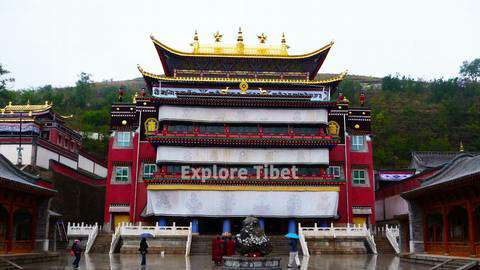
The Kumbum monastery is located in Qinghai Province which is 25km away from the Xining, the capital of Qinghai Province. It is in the small valley of Lusar village which is the historical Tibetan region of Amdo. It is one of the most sacred monasteries around Xining. It was founded in 1360 during the Ming Dynasty by the great Tibetan master Je Tsongkapa, the founder of the Gelug sect of Tibetan Buddhism. He was born in a small town called Tsongkha in 1357. Later in the year 1560, the meditator Tsondru Gyaltsen had built the monastery requested by the 3rd Dalai Lama Sonam Gyatso while he returned from Mongol. The monastery was built completely by fencing the Tree of Great Merit in 1583. It was named the Kumbum Monastery which means the hundred thousand statues of Buddha. It was one of the biggest monasteries in southern Tibet known as Amdo. Later in 1612, the head of Kumbum monastery Ozer Gyamtso had built Tibetan Buddhist monastic college and it was expended as there were a thousand houses and many temples.
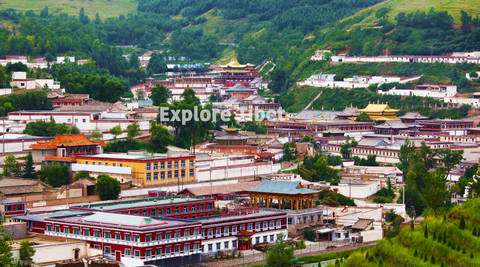
There are four monastic colleges in the Kumbum monastery, the Shadupling monastic college was the largest among them. In each monastic college, they studied different textbooks. The Shadupling monastic college mainly studies the textbook of Jesunpa Chokyi Gyaltsen as same as the great Gaden and Sera monastic college in Lhasa. The Dukhar monastic college studies astrology and it was founded by Ngawang Shedrup in 1820. Those students will receive a Tsi Rampa degree after their graduation. The Dukhar monastic college is also known as Kalachakra monastic college. The Gyupa monastic college follows the Tantric and it is also known as the Tantric college which was founded by Chojey Legpa Gyatso. After graduate from those colleges in Kumbum and Lhasa, the highest degree in Gelug Sect is awarded in the Kumbum monastery during the Kumbum Monlam Prayer festival each year. Later in 1711, the Lobsang Tenpay Gyaltsen built a new Tantric college called Ngagpa monastic college and medical college was also built-in 1725 by the Qing commander. Those medical students were awarded the Men Rampa degree. There were more than four thousand monks studying in the Kumbum monastery before the Cultural Revolution in Tibet. Currently, there are around five hundred monks in the Kumbum monastery and among them, one-third of students are under debating monastic college and rest were evenly distributed in three monastic colleges.
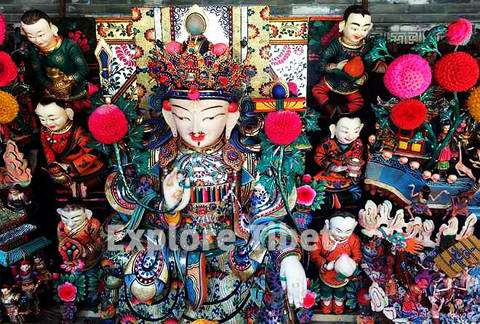
There are few famous landmark places for pilgrims and temples in the Kumbum monastery. There are a Propitious temple, the peace temple, and the Buddha temple. The great hall of the golden roof, the hall of the golden roof, the great hall of meditation, the hall of butter sculpture and the tree of great merit are the most famous sites in the Kumbum monastery. The Great hall of the Golden Roof is a large building containing a number of murals depicting scenes from the Buddha’s life and a huge silver Buddhist stupa within which is kept a statue of Je Tsongkapa. There are many statues of other gods and goddesses. The Hall of the Golden Roof is a smaller temple for the lovers of taxidermy, containing within its walls some well-preserved specimens of bulls, antelopes, bears, monkeys, and white horse, which is said to be taken by the ninth Panchen Lama from Tibet to Qinghai within one day. The temple is also known as Gonkhang in Tibetan. The Great Hall of Meditation is a quite large and dark prayer hall. It contains lots of hanging silk tapestries of arts and thickly carpet covered pillars. This hall is used for meditation purposes as it is pretty dark inside the hall. It also contains many imposing statues, carving, silk embroidery works, and gold and silverware.
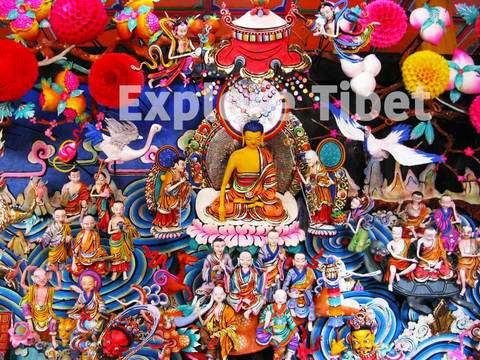
The Hall of Butter Sculptures is one of the most visited halls in all the halls. It contains many famous yak butter sculptures. This art has existed for many hundreds of years which were brought from Tibet to the Kumbum monastery in the sixteenth century. The butter sculptures are put on display during the Lantern Festival which is one of the most famous festivals hosts by Kumbum monastery in Tibet. During this festival, thousands of people all around the Tibetan region come to see those beautiful butter sculptures. The other famous festival is the Gaden Ngamchoe festival which is held on the 25th of October (Tibetan calendar and it is the day of the death anniversary of Je Tsongkapa. During the festival, the whole monastery campus will be lighted up with candlelight and butter lamps in a different design.
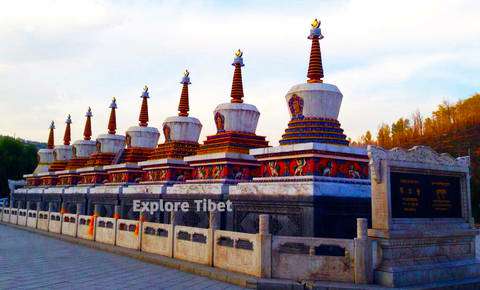
The Kumbum monastery’s monks and local people chant melodically and walk around the monastery campus. So many tourists and local Chinese also join for this amazing festival. The Tree of Great Merit is a sandalwood tree which is one of the most important sites in the monastery. According to its tradition, the tree grew at the site where the father of Je Tsongkapa was cremated and some say that the tree grew up where the drop of blood from Je Tsongkapa had fallen on the ground. Anyhow the tree is known as the Tree of Great Merit. the leaves and barks of the tree reputed to bear the impression of the face of the Buddha and there are various mystic syllables and its blossoms were give off a pleasing scent. Every year, so many Tibetan people come from different parts of Tibet to see that tree.
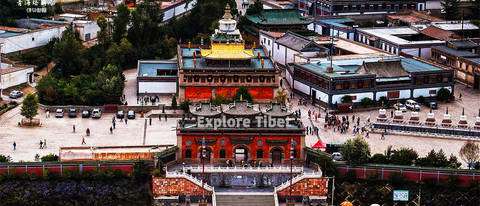
The Kumbum monastery is not far from Huangzhong town and it takes around ten to fifteen minutes by bus or car from Xining city. There are many minibuses and taxi are available from the west end of Xining city. The minibus leaves every twenty minutes from the west end of the Xining city. The buses stop at the Haungzhong bus station and it takes twenty to thirty walk uphill to the main gate of the Kumbum monastery. There are few hotels in the Haungzhong town and many restaurants. There is also a hotel and restaurant which are owned by Kumbum monastery at the left side of the monastery gate.
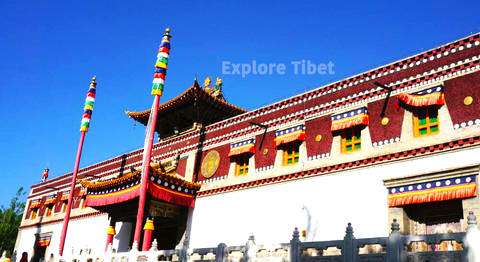
If you want more information on Kumbum Monastery or planning to visit, please fell free to contact us at [email protected]. and our expert one-to-one trip consultant will give you the best Tibet Travel Information.
